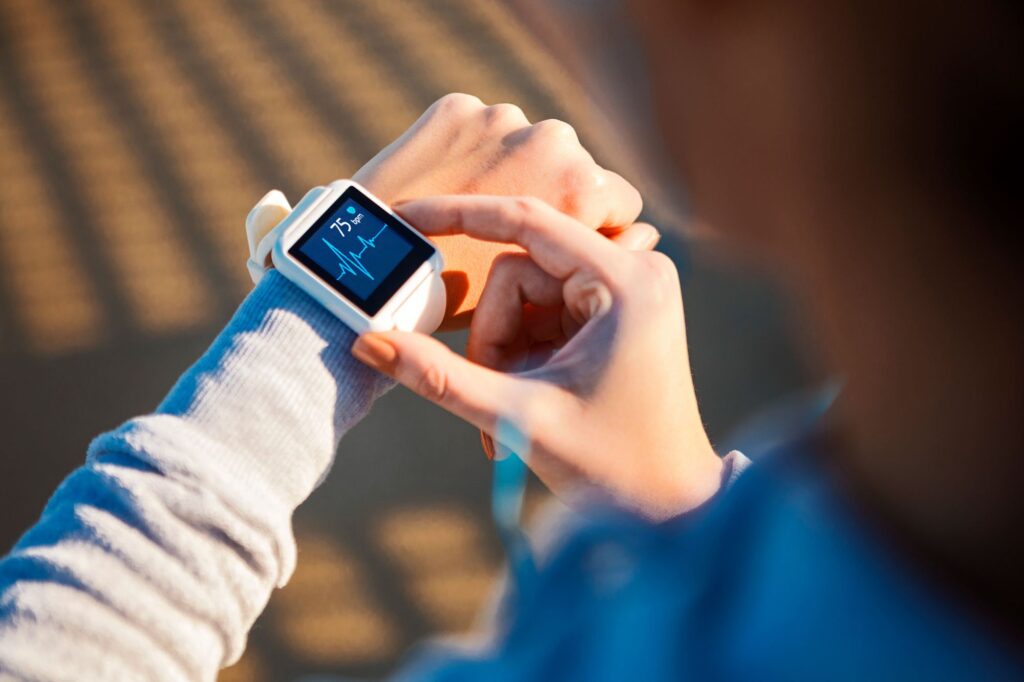
Wearable Health Device
In recent years, wearable health devices have become a cornerstone of modern healthcare. These innovative gadgets, worn on the body, allow individuals to monitor their health in real-time, track fitness activities, and even detect early signs of potential health issues. From fitness trackers to smartwatches, wearable devices have revolutionized the way people interact with their health and wellness. As these devices become more sophisticated, they offer a wealth of benefits that empower individuals to take control of their wellness journey.
The integration of technology into healthcare has introduced a new era where individuals are no longer solely dependent on healthcare professionals for monitoring their well-being. Instead, they now have the tools to track their own vital signs, sleep patterns, physical activity, and more. This data, when collected over time, can provide valuable insights into a person’s health, helping them make informed decisions about lifestyle changes, exercise routines, and diet. Moreover, the constant advancements in wearable health devices mean that users now have access to features such as heart rate monitoring, stress management, and even blood oxygen levels, all at their fingertips.
A New Era of Health Monitoring
Wearable health devices are continuously evolving, becoming more advanced with each passing year. They now come equipped with sensors capable of measuring various aspects of the user’s health. One of the primary functions of these devices is to track physical activity, including steps taken, calories burned, and distance traveled. However, modern devices go beyond just fitness tracking. Many of them include heart rate monitors, sleep trackers, and even GPS functionalities, which provide users with a more holistic view of their health.
These devices not only allow users to track their physical activity but also provide real-time feedback that can motivate them to improve their lifestyle. For instance, many wearable health devices alert users when they are sedentary for too long or when they have reached their fitness goals, encouraging them to stay active throughout the day. The ability to monitor health in real-time empowers individuals to make quick adjustments to their routines, such as taking a walk when they’ve been sitting for too long or increasing their workout intensity when their heart rate remains too low.
Personalized Health Insights
Wearable health devices collect vast amounts of data that can be analyzed to provide users with personalized insights. For example, through continuous monitoring of heart rate and physical activity, these devices can detect patterns in the user’s health, offering suggestions to optimize performance. They can also detect irregularities, such as a sudden increase in heart rate, which may indicate the need for further medical attention. Many devices are now capable of offering health advice based on this collected data, turning raw numbers into meaningful recommendations for the user.
By having access to such information on a daily basis, users are empowered to make lifestyle changes that support their overall health. Whether it’s adjusting their diet to improve blood sugar levels or increasing their sleep hours to enhance recovery, wearable health devices help individuals take a more proactive approach to their well-being. This level of personalization is one of the key reasons why wearable devices have become so popular in the health and wellness space.
The Role of Wearable Health Devices in Health and Wellness
In addition to tracking fitness metrics, wearable devices play a crucial role in the broader field of health and wellness. They are increasingly being used to monitor chronic conditions, such as diabetes, hypertension, and sleep disorders. By constantly tracking key metrics, such as blood pressure, blood sugar levels, and oxygen saturation, these devices enable people to manage their health more effectively. With the help of wearable devices, individuals can monitor their condition without needing to visit the doctor as frequently, offering greater convenience and peace of mind.
For people with chronic illnesses, wearable health devices can be a life-saving tool. For instance, individuals with diabetes can use wearable glucose monitors to keep track of their blood sugar levels throughout the day. This real-time data can be used to adjust insulin doses or make dietary changes that prevent dangerous spikes or drops in blood sugar. Similarly, those with heart disease can benefit from continuous heart rate monitoring, allowing them to detect irregularities early and take appropriate action before a serious event occurs.
Promoting Wellness Through Data
In the realm of health and wellness, wearable devices are not only helpful for managing illnesses but also for promoting overall well-being. Many of these devices offer features that assist users in improving their mental health, such as stress monitoring and mindfulness exercises. For example, some wearables can track the user’s stress levels by monitoring physiological indicators such as heart rate variability and skin temperature. With this information, users can engage in relaxation techniques, such as deep breathing exercises, to reduce stress and improve their emotional well-being.
By offering such features, wearable health devices encourage a balanced approach to wellness that includes both physical and mental health. Whether it’s reminding users to take a break, guiding them through a meditation session, or encouraging them to take deep breaths when stress levels rise, these devices support individuals in taking care of their mind and body simultaneously. This dual approach is essential for achieving holistic wellness, which is increasingly recognized as the key to leading a healthy, happy life.
Enhancing Healthcare through Data Integration
The data collected by wearable health devices does not just benefit the individual user—it can also be integrated into broader healthcare systems, leading to improved care. Many wearable devices are now designed to sync with healthcare providers’ systems, allowing doctors to monitor their patients’ progress remotely. This is particularly useful for patients with chronic conditions who need regular check-ups. With the integration of wearable health data into electronic health records (EHR), healthcare providers can access real-time information, allowing them to make more informed decisions about treatment and care plans.
This integration enhances the healthcare experience for both patients and doctors. Patients no longer have to wait for the next doctor’s appointment to discuss changes in their health, and healthcare providers can intervene earlier when abnormalities are detected. Furthermore, the ability to monitor patients remotely allows for a more personalized approach to healthcare, as treatment can be tailored based on the data gathered from wearable health devices.
Data Privacy and Security in Wearables
While wearable health devices offer numerous benefits, they also raise concerns about data privacy and security. As these devices collect sensitive health information, it is essential for manufacturers to implement robust security measures to protect users’ data from unauthorized access. This is particularly important as the data collected by wearable health devices can be used to monitor and diagnose health conditions, making it an attractive target for cybercriminals.
To address these concerns, many wearable health device manufacturers have implemented encryption protocols and data anonymization techniques to ensure that user data is kept secure. Additionally, users are typically given control over their data, allowing them to decide which information they wish to share with third parties, including healthcare providers. As the demand for wearable health devices grows, it is likely that data privacy regulations will continue to evolve to ensure that users’ health information is protected.
The Future of Wearable Health Devices
As wearable health devices continue to advance, they are expected to play an increasingly important role in the future of healthcare. The ongoing development of sensors, AI algorithms, and machine learning techniques will enable these devices to provide even more accurate and detailed health information. In the coming years, wearable health devices may be able to detect a wider range of health conditions, from early signs of cancer to mental health issues such as depression and anxiety.
Moreover, the integration of wearable devices with other healthcare technologies, such as telemedicine platforms and AI-driven diagnostic tools, will create a more connected and efficient healthcare ecosystem. This will empower individuals to take even greater control over their health, allowing them to manage their wellness from the comfort of their own homes.
Conclusion
Wearable health devices are revolutionizing the way individuals approach their health and wellness. By providing real-time data, personalized insights, and health monitoring capabilities, these devices empower users to make informed decisions and take proactive steps toward better health. Whether it’s improving physical fitness, managing chronic conditions, or enhancing mental well-being, wearable health devices are making it easier than ever for people to take control of their wellness. With continuous advancements in technology, the future of wearable health devices looks brighter than ever, promising even greater benefits for individuals seeking to lead healthier, more fulfilling lives.





